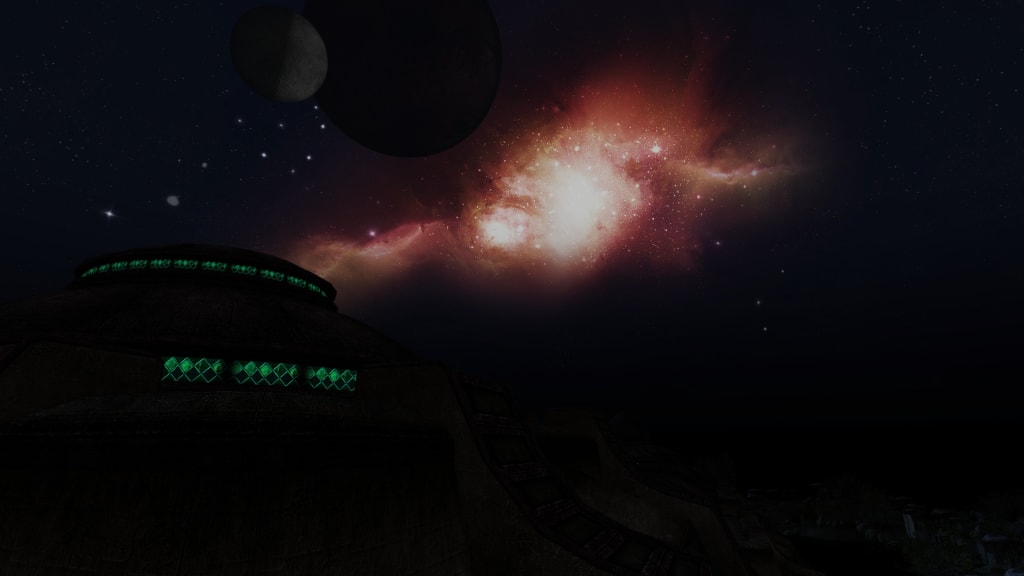
Written witness account of Doctor Zachary Grant, 2182 -2202
It came from the depths of space. An amalgamation of ash, flesh and steel; A creature of such size and horror had never been seen before in the Earth’s history. A Neptune-sized mass of tentacles and bulbous flesh, backed by steel and coated in stardust appeared on the horizon. It was as if the creature knew when to strike – the recent disassembly of the International Space Station and ongoing repairs of the Hubble Space Telescope had left us in a much more vulnerable position then we possibly could have known. While the Earth’s inhabitants scrambled in horror, the looming monstrosity latched on to our humbled planet, it’s appendages causing unimaginable devastation.
Entire swathes of our home were lost, when the creature gripped the world. Cities crushed under the immense weight of its flesh were the first to go, followed by those affected by the resulting tidal waves and earthquakes. The world was in shambles, as we frantically tried to make sense of what had just happened. While most of the remaining world order banded together to try and find a solution, terrorism also flourished, as people began taking advantage of the turmoil. Much of the world was now covered by the creature’s limbs, but once things began to settle, it seemed as though the worst was over. It had hold of us, but that was all it appeared to be doing – holding on.
At least at first. As the first few years rolled by, we attempted to rebuild our mangled world and further study the creature, but soon realized a plethora of problems. Firstly, we quickly understood that approaching the tentacles was impossible; Slowly but surely they emitted a poisonous gas, powerful enough to slip through our most advanced suits and masks. Secondly, all contact attempts had failed, as we weren’t sure if it was capable of communication (or what that might look like). It also appeared to be manufactured in some way, so many were taking this as a direct attack from an unknown enemy. We tried to use machines, but on attempting to take samples from the creature, it was understood that it bled some sort of acidic yellow ichor that would destroy any gadgets we sent. We were truly at a loss, why had this behemoth come?
Before long a team of scientists, of which I was a part, formed to deal with this crisis. Along with myself, there were six others, including a woman of some repute. Doctor Ava Greiner, one of the leading minds in astrophysics, was the team lead, as it was thought her expertise might reveal a weakness. She was a woman of average build, in her mid-forties, with short white-blonde hair and her signature heart shaped locket. Her husband was unfortunately killed when the attacks first hit, and she wore it as a memento for her fallen lover. I distinctly remember the passion with which she worked on our projects, because for her this was personal. Using nuclear weapons was the first brought to the table.
This only complicated things. The creature was so immense in size, and its armored flesh so thick, the bombs did very little to dissuade it from its task. Its task which we had also now come to realize, as we crested the first decade with our new guest. Everything surrounding the tendrils covering the Earth was slowly dying, and it was theorized that the creature was consuming all matter from our world – sucking the life from our planet, if you will. It was beginning to make sense why it had come, a being of this size would need ample nourishment to fuel its form.
Thankfully, the two poles of our planet were the furthest from its masses. A century before, when the atmosphere deteriorated to an alarming degree, large atmospheric generators were put in place on the poles to correct the problem. These facilities were spared from the destruction, and so not all hope was lost. We were still hard at work to determine our best course of action, and everything was on the table. From virology to black holes, every angle was considered to save humanity. Though, somewhat unsurprisingly, many of the more drastic and risky plans came from Dr. Greiner herself.
We worked tirelessly over the next few years, and during our studies, the world had only fallen further into ruin. Religions had popped up, praising the being as a deity, complicating things. Furthermore, the world’s leaders were constantly at odds, not only with our research team but also with one another. Things were becoming unstable fast, and all the while the world slowly died beneath our feet. Everything was withering, from the largest plants to the smallest creatures. The mysterious monstrosity marked the land in every way imaginable, and now starvation was a real threat for those of us left.
By the start of the fifteenth year, a radical plan was proposed. We predicted all life would be wiped from the Earth within five short years, and people were desperate for an answer. Greiner proposed that we attempt to create a wormhole, in hopes of displacing the creature to another location in space. No such experiment had been done before, and there was much contention; The risk of the Earth being destroyed in the process was high. However, through rigorous calculations, she was able to prove that because the creature was so much larger than the Earth, and with the right conditions, it should work. After much deliberation and planning, a consensus came, and we threw everything we had at our new goal.
The particle accelerator had been largely unmolested, being so deep beneath the ground had spared it. We quickly relocated the team there, and got to work. More astrophysicists were brought in to assist Dr. Greiner with her research into wormholes. The task was monumental, no such anomaly had been created before, let alone properly tested, but the plan had to work. We were running out of time, but after three years of research and development, we were ready to launch our new weapon. The accelerator was to be moved to outer space, a precise distance away from the Earth, and a wormhole created. It was a masterful scientific breakthrough, to say the least, but we had very little time to celebrate.
Myself, Greiner, and several engineers were chosen to undertake the mission. I can still feel the rumbling of the heavy rockets beneath me when our shuttle launched, hauling our cargo, out passed the stratosphere. I had never been to space before, but as I stared down at our world, the true size of our enemy became apparent. The Earth was barely recognizable beneath it, as the strange alien creature consumed our planet like a ripe orange. I couldn’t help but feel emotional after all the Hell we had gone through to get to this moment, but I also couldn’t help but feel hopeful. We knew it could work. We had to believe it would.
We reached our destination within hours, and began our preparations. The last nearly twenty years of work had led to this moment. As we assembled the accelerator, the tension was palpable. By the following afternoon in Earth time, we were ready to go through with our plan. We knew that we probably weren’t going to make it back to Earth alive, but we also didn’t have much of a choice. As the accelerator sprang to life, and we began launching our weapon, the feelings of doubt were wholly overwhelming. Our shuttle launched back in the direction of Earth, and once we were at a sizeable distance, we activated the accelerator.
It’s difficult to remember exactly what happened next. I watched as the accelerator picked up speed, until that final moment of impact. I remember seeing the space bend and twist around it, before a flash of light exploded from the funnel’s center. Colors and patterns flew from its mouth in our direction, shaking the ship violently with its sheer explosive energy. And just like that, whiteness. When I came to, all I could hear was the alarms of the space shuttle all around me, and the feeling of floating. Though, not floating in anti-gravity, but in water. Salty water.
When my senses returned, I came to a horrific awakening. All of the crew but one engineer had perished, including Dr. Greiner, who slumped in her chair with a horrendous head wound. I briefly mourned my long time colleague, shortly after tending to the other survivor. I opened the emergency hatch to see where we had landed, and as I climbed out from the shuttle, nothing could have prepared me for what I saw next. Most importantly, the creature was gone, and the plan appeared to have worked. However, my elation was overridden by a strange feeling, as if something wasn’t right.
When I looked up it was easy to see why. Our golden yellow sun had been replaced by two, glowing red ones, that danced with each other and cast a rose colored hue across the water. Frantically looking around, I found my way to the emergency beacon and activated it, hoping beyond hope that someone could come to our rescue. We bobbed helplessly in the ocean, and as I awaited a response I could only come to one conclusion.
The Earth had been pulled through the wormhole, too; Moon and all. In fact, when I checked the charts, we were 65 million light years away from the Milky Way, in a galaxy labelled SCV-116. Miraculously, we wound up in a solar system that could sustain life – and at a reasonable distance from the Suns. Our planet appeared to be intact, and stable, despite a slight rotational increase. Against all odds, we had managed to slip an entire world through a wormhole.
As thoughts raced through my mind, the crackle of the radio interrupted me, and I sprang to the relief of hearing a voice on the other side. That of NASA command! Others had managed to survive the trip through! After confirming the creature was nowhere in sight, I sat back exasperated as the two of us awaited rescue. It was an utter miracle, the world had been saved in the most unexpected of ways. Though the exact whereabouts of the mysterious creature were unknown, it seemed to have been displaced elsewhere, as Dr. Greiner intended. As I looked out at the twin Suns, my thoughts drifted to what this might mean for humanity’s future.
When we safely returned to NASA after seeing our wounds tended, I was able to get a closer look at our new pocket of the universe. How lucky we were, to have survived. The atmospheric generators had held, and so we retained our magnetic sphere. Furthermore, the galaxy bore a vague heart shape, and it was decided that our new home be named the Heart Locket galaxy, after the late Dr. Greiner. Without her and her plan, the Earth would have been lost forever. We had a second chance, but lest we forget the creature that was nearly our doom. There was much now to do, the scars were everywhere, and one could almost hear the anguish of the planet. Although we had survived, the looming threat of the mysterious creature was still present; The future was uncertain, but the Earth was safe… For now.
About the Creator
Enjoyed the story? Support the Creator.
Subscribe for free to receive all their stories in your feed. You could also pledge your support or give them a one-off tip, letting them know you appreciate their work.






Comments
There are no comments for this story
Be the first to respond and start the conversation.